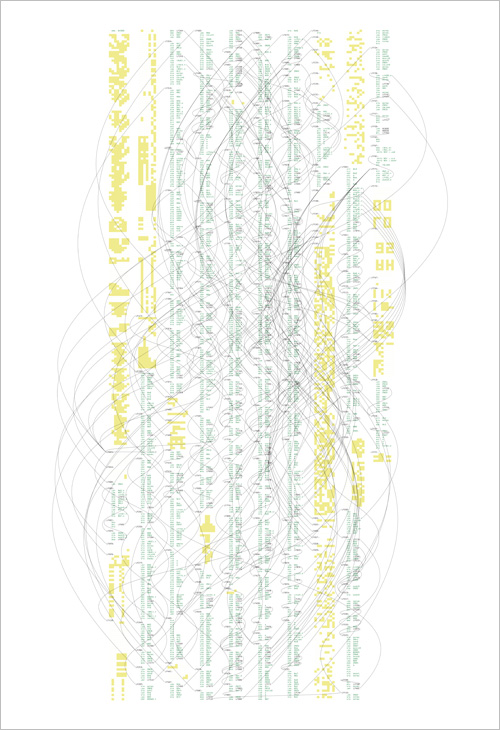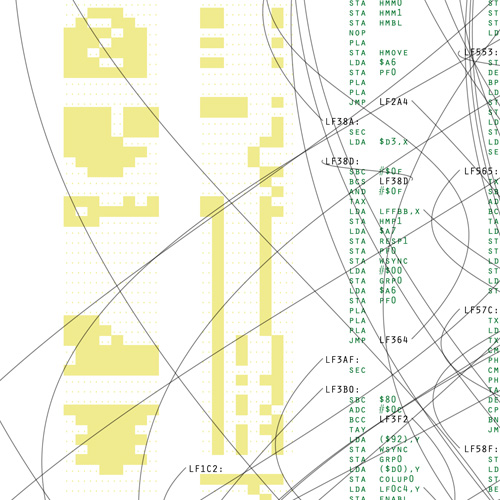Awesome now travels by poster tube
A few weeks ago I received a note from Ed Fries, who was interested in a distellamap-style print of his recently-finished Halo 2600.
Halo? Like the Xbox game by Bungie?
Why, yes! Sure enough, he’s written a version of the game for he Atari 2600.
You can play the game here, and if you don’t drown in the awesome (or die from laughing), you can now purchase prints here. Like the other distellamap prints, it shows how the image and code data coexist and interact inside an Atari 2600 cartridge games:
A detail of what it looks like up close:
(And as with the other prints, proceeds are given to charity.)



